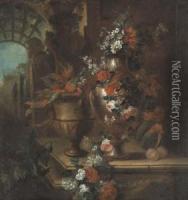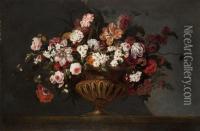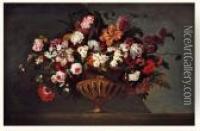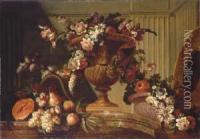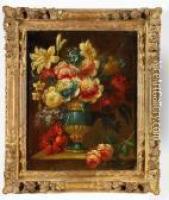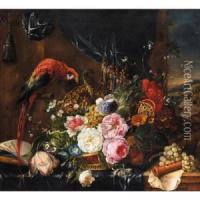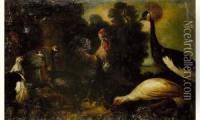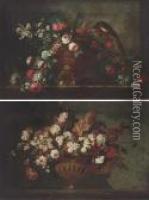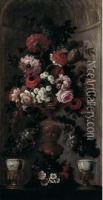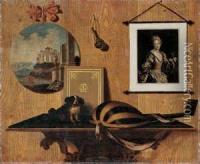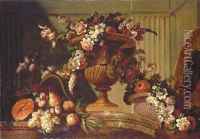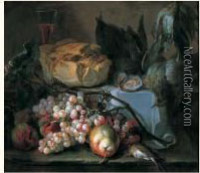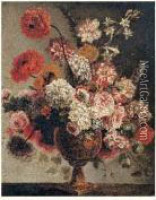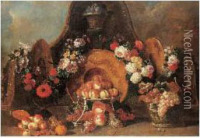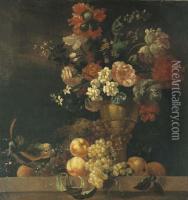Pierre-Nicolas Huillot Paintings
Pierre-Nicolas Huillot was a French painter and engraver known primarily for his works during the late 17th and early 18th centuries. He specialized in still life paintings, a genre which was highly popular among the French bourgeoisie and aristocracy of the time. His compositions often featured arrangements of flowers, fruits, and other objects that were rendered with careful attention to detail and a vibrant use of color. Huillot's work reflects the influence of the Dutch and Flemish still life traditions, which were characterized by a meticulous depiction of textures and surfaces, as well as a deep understanding of the play of light on different materials. Despite the prominence of still life in his oeuvre, Huillot also produced a number of engravings, some of which served as illustrations for books and scientific publications of the period. His engravings are noted for their precision and clarity, qualities that made them valuable for the dissemination of knowledge in an age before photography. Throughout his career, Huillot enjoyed the patronage of wealthy clients and was recognized for his artistic skill. His works can be found in various museums and collections in France and around the world. However, compared to some of his contemporaries, Huillot has not been as extensively studied or celebrated, and as a result, specific details about his life and the full extent of his artistic production may not be as well-documented. Nevertheless, Pierre-Nicolas Huillot remains a notable figure in the history of French art, particularly for his contribution to the still life genre.
